How to Write a SaaS Price Negotiation Letter/Email
How to Write a SaaS Price Negotiation Letter/Email That Actually Works
In the world of SaaS procurement, the stakes are high. A poorly negotiated deal could lock your company into inflated prices, unnecessary add-ons, or inflexible terms. But what if you had a playbook that not only helped you craft the perfect price negotiation letter, but also stacked the odds in your favour using modern tactics?
The SaaS Supplier Price Negotiation Letter Guide
Built from industry-leading negotiation strategies, real-world SaaS buyer data, and templates from procurement pros, this playbook is your strategic advantage.
Who Is This For?
Procurement professionals, finance directors, and operations managers who:
- Need to reduce SaaS spend without damaging supplier relationships
- Are preparing for contract renewals or net-new purchases
- Want to negotiate with confidence backed by research and data
1. A Realistic Negotiation Scenario
Imagine this: You’re the Director of Procurement at a fast-growing mid-market company. Your teams rely heavily on a mission-critical SaaS platform—so much so that it’s deeply embedded into your operations. The vendor knows this. They send a renewal quote with a 12% price increase, despite no meaningful upgrades, no increase in usage, and an unchanged seat count.
Your internal audit shows that 20% of the licenses go unused each month. Some bundled add-ons have not been accessed in nearly a year. Meanwhile, finance is pressuring every department to contain costs amidst tightening budgets. You’ve done your homework: competitive tools offer similar features at 20–30% less, and many of them are actively pursuing you.
You’re loyal, but not blind. You understand the cost of switching—but also the danger of complacency. This renewal is your inflection point. Either you drive meaningful savings and structural fairness—or you accept a deal that could haunt your P&L for years. This is not just a negotiation. It’s a test of your leadership, diligence, and ability to protect your company.
2. Proven Negotiation Template with Highlighted Techniques
Use our advanced negotiation letter template, packed with strategic power moves:
Thank you for your proposal and for your continued support over the past [X years]. We’ve appreciated the partnership and the critical role your platform plays in our operations. [Praise & Relationship Framing]
After a thorough internal audit, we’ve identified several areas of underutilisation and inefficiency. Notably, 20% of licenses remain inactive and multiple add-ons included in the quote have gone untouched for the past year. We are also seeing a proposed 12% uplift without any enhancements in functionality or support level. [Usage Data + Gentle Pushback]
To move forward together, we propose the following revisions:
- A 9% reduction in proposed pricing to align with actual usage. [Odd Number Counteroffer]
- Removal of non-essential add-ons (“Analytics Plus” and “Team Sync”) from the contract. [Don’t Pay for What You Don’t Use]
- A 24-month term with annual billing, capped uplift, and renewal flexibility. [Price Lock with Predictability + Flexibility Clause]
In addition, we are open to:
- A longer commitment with logo usage, mutual case study, and customer reference rights. [Trade-Offs & Soft Concessions]
- Exploring expansion to your [additional product/service], if favourable terms are extended. [Upsell Leverage]
Given our current budget cycle and discussions with alternative providers—including two offering 25–30% lower rates—we must resolve this renewal by [date]. [Loss Framing + Competitive Alternatives + Deadline]
We remain hopeful this can continue to be a mutually beneficial relationship. However, should pricing and terms remain unchanged, we will have no choice but to escalate to an RFP and reallocation of budget.
Best regards,
[Your Name]
Director of Procurement
[Your Company]
GET THE FULL GUIDE HERE INCLUDING A TEMPLATE AND FOUR SAMPLE LETTERS (incl. when negotiating from a position of weakness)
3. A Writing Guide That Teaches Strategy
This isn’t just about putting words on a page. This is how you lead the negotiation with confidence and control:
- Open with rapport – Start your letter by showing respect and appreciation. Acknowledge the supplier’s past efforts, highlight the positive outcomes of your relationship, and affirm that you value the partnership. This immediately disarms defensiveness and sets a tone of collaboration, not confrontation.
- Use internal audit leverage – Reference clear internal data: usage reports, license activity, and engagement analytics. Suppliers respect buyers who are informed and data-driven. It also limits room for pushback when you propose reductions or changes.
- Insert specificity – Avoid generalities. Instead of saying “many seats are inactive,” say “22 of 110 seats were unused for three consecutive months.” Specific figures signal credibility and attention to detail, increasing your negotiating authority.
- Employ loss framing – Humans are more driven to avoid losses than to secure gains. Remind the supplier, subtly, of what they risk losing: your business, recurring revenue, reputation, or referrals. Position the renewal as an opportunity to preserve—not forfeit—value.
- Signal BATNA – Your Best Alternative to a Negotiated Agreement is your fallback option. Mentioning competitor engagement or other viable tools shows you’re not cornered. This keeps pressure on the supplier to offer their best terms.
- Offer odd-numbered counteroffers – Asking for a 9% discount (rather than 10%) demonstrates that your request is grounded in analysis, not guesswork. It feels deliberate—and thus harder to dispute.
- Use soft language with firm intent – Be empathetic but unwavering. Phrases like “we understand your pricing pressures” or “we want to continue our partnership” should be followed with clear, non-negotiable requests. Respectful tone, resolute stance.
- Create urgency – Make your timeline explicit and meaningful. Tie your deadline to internal budget cycles, quarter-end decision-making, or procurement reviews. It creates forward motion and discourages delay tactics.
- Propose trade-offs – Offer value that costs you little but means a lot to them. Logo rights, case studies, longer terms, or user group participation can tip the scale in your favour. Use them as bargaining chips.
- Leave the door open – End on a hopeful, collaborative note. Even if you introduce tough terms, make it easy for the supplier to say yes. Suggest a meeting, invite further discussion, or express optimism that you’ll find a win-win outcome.
4. A Sample Negotiation Letter
Dear Sarah,
Thank you again for your partnership over the past two years. We’ve appreciated your team’s support and the platform’s reliability—it’s become an integral part of our business.
That said, we were surprised by the renewal quote reflecting a 12% increase. Our usage data shows that over 18% of licenses remain idle monthly. Additionally, “Analytics Plus” and “Team Sync” have not been used since implementation.
We’ve also benchmarked the market. Competing solutions are offering comparable core functionality with better license flexibility, more transparent SLAs, and pricing up to 30% lower. These providers are actively courting us.
If we cannot reach fair terms, we will be forced to open a competitive RFP. This will not only affect your current ACV with us but could eliminate future expansion opportunities across our global teams. We’d much prefer to deepen the partnership—but under a structure that reflects mutual value.
To proceed, we propose:
- A 9% reduction from the proposed price
- Removal of unused modules
- Annual billing with a capped uplift
- Option to cancel after 12 months with 60-day notice
If we can align here, we’re willing to:
- Participate in a featured customer spotlight
- Commit to a 2-year agreement
- Evaluate additional services in Q3
We need to finalize the budget by March 29. Please respond before then so we can proceed accordingly.
Warm regards,
Jamie Lin
Director of Procurement
StreamCore Inc.
5. Conclusion and Summary
This guide gives you a tactical edge in any SaaS renewal or purchasing negotiation. Whether you’re dealing with a complex renewal or navigating a first-time SaaS purchase, it gives you a repeatable, proven process to negotiate with clarity, confidence, and strategic depth.
Below is a breakdown of the most powerful techniques and how they compound your leverage:
Internal Audit Leverage
Before you negotiate, you investigate. Usage audits uncover the waste suppliers hope you don’t see—unused seats, dormant features, over-bundled licenses. Sharing these findings subtly signals: “We’ve done our homework. We’re not paying for fluff.”
Competitive Benchmarking
Name-drop competing offers—but tactfully. Demonstrating knowledge of the market anchors your ask in realism and lets suppliers know you’re not operating in a vacuum. It’s not a threat. It’s a signal: “You are being measured.”
Loss Framing
Human behaviour is more motivated by loss than gain. Help the supplier visualize what they risk losing: revenue, relationship, reputation, long-term expansion. You’re not burning bridges—you’re showing the fork in the road.
Odd Numbered Discounts
Counter with 3%, 7%, 9%. These numbers suggest rigor. They convey you didn’t pull your counteroffer from thin air—you calculated it. Psychology shows odd numbers feel fairer, more intentional.
Strategic Trade-Offs
You don’t just take—you offer. Case studies, testimonials, longer terms, bundling with other services—these are low-cost to you but high-value to the vendor. Trade-offs keep the conversation positive and partnership-oriented.
Uplift Protection
Don’t just focus on this year’s rate. Cap future increases. Ask for renewal clauses that limit price hikes to a fixed percentage. Build predictability into your agreement before the supplier can exploit inertia.
Contract Exit Options
Long-term deals should not mean long-term traps. Negotiate opt-outs after 12 months, flexible user scaling, or downgrade protections. Optionality is power.
Set a Firm Deadline
Urgency drives action. Tie your negotiation timeline to real internal cycles—budget approvals, board meetings, procurement sprints. Letting deadlines slide weakens your credibility.
Call Out Consequences
Sometimes you must name the unspoken. Politely reference the possibility of launching an RFP or reallocating spend. Show what happens if terms stay unfavourable—but do so with professionalism and calm resolve.
Use Emotional Intelligence
The strongest negotiators are not combative. They are composed, curious, and empathetic. Maintain a respectful tone, acknowledge constraints on both sides, and create an environment where saying “yes” feels like the obvious path forward.
Taken together, these tactics form a persuasive architecture. When layered correctly, they transform you from a price-haggler into a strategic partner—and the negotiation from a battle into a business case.
This isn’t just about writing a letter. It’s about influencing outcomes. Use this to lead your negotiations with clarity, leverage, and conviction.
Pro Tip: Don’t wait until renewal deadlines loom. Start preparing 90–180 days in advance to maximise leverage.
Want more? Reach out and we’ll help you build a custom negotiation playbook for your next renewal or purchase.
Recent Posts
How to Use the Decoy Effect in Procurement Negotiation
In procurement, smart framing beats force. This article breaks down how to use the Decoy Effect—a behavioural science tactic—to guide suppliers toward your...
How to Negotiate in India: A Strategic Guide for Business Success
India is a land of immense opportunity—and complexity. To succeed in business negotiations here, foreign professionals must understand the nuances of hierarchy, relationship-building,...
The Contrast Principle in Procurement Negotiation
In high-stakes procurement, perception is leverage. This article explores how elite buyers use the contrast principle to frame negotiations, control supplier expectations, and...


